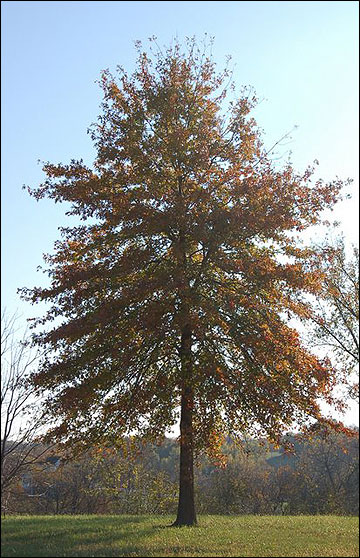Pin oak (Quercus palustris)
Large trees

- Maximum height
70 feet - Relative growth rate
Good - Freedom from insect pests
Good - Freedom from disease problems
Good - Resistance to storm damage
Excellent - Will grow on poorly drained soil
Good - Will grow in hot, dry areas
Poor - Easy to transplant
Good - Withstands city conditions
Good
Pin oak continues to be among the most popular shade trees for home landscapes. The branching habit of the pin oak is unique. The upper branches are ascending, the middle ones horizontal and the lower ones drooping. This branching habit makes pin oak a poor choice as a shade or street tree. As the drooping lower branches are removed to allow for traffic beneath the tree, the horizontal branches begin to droop. Some branches always seem to be hanging down to interfere with traffic. Pin oak should he planted where it has room to assume its natural shape and the branches can be allowed to grow down to the ground. Pin oak will not grow in soil with a high pH. The leaves will turn yellow because of iron chlorosis, and extensive soil treatment will be necessary to return the tree to a healthy condition.